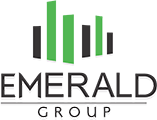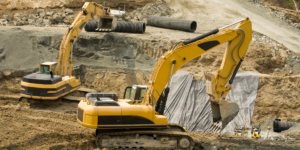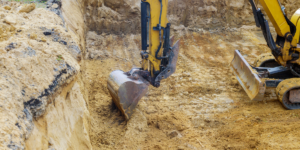What makes a great cost estimate?
Construction cost estimating as a career choice? That was the question I asked myself many years ago. It was when I started working as a cost estimator (because I lacked a project management opportunity). I still make a living as a cost estimator and found the answer to my question: yes! What I enjoy the most is that it is never boring. I get to work on a vast variety of projects and learn something new with every single one. I spent half of my career in a supervisory or management position on construction sites. Switching to cost estimating was a natural career move.
During all the years that I have been doing cost estimating, there were two questions that I kept coming back to:
- How to be more productive. It does not matter how much time there is, it never seems enough.
- How to improve accuracy. I always have that feeling of “Am I sure I made no mistakes?”
Maybe most of you already have your own methods and tools to help with productivity and achieve higher accuracy. I will share with you what I use to help me achieve more in less time while improving the quality of my work.
1. Cost estimating and take-off software.
Construction estimating software shortens the time required to produce a cost estimate. And, of course, reduces the margin for error. There are many options available to choose from. And they all have their own merits or shortcomings.
I value this benefit in cost estimating software: flexibility and ease of use. And when I say flexibility, I think of:
- At least three levels of work breakdown structure and double coding ability,
- The ability to use more than one database,
- Has a generous report menu.
2. Cost Estimating Database.
This is the only and the most important item on my list when estimating costs. I can replace the estimating software with excel if need be, I can do manual take-off. But, I cannot develop a cost estimate without using my database. Over the years, my database grew to include data from all projects that I had the privilege to do the cost estimate. And I will keep adding to it in the years ahead.
I structure my database as follows:
- Activities (complete with the crew(s) and production rates).
- Construction equipment,
- Labour,
- Crews,
- Construction materials,
- Permanent materials,
- Subcontractor (or all-inclusive unit price)
Setting up the various databases is not a difficult task. The challenge begins when assigning crews and production rates to each activity. This task deserves the most attention of a senior cost estimator.
A mix of industry-published data and company-specific cost control data, fed back to the cost estimating team, is a must-have. And this is where the benchmark data comes into play:
3. Benchmark data.
What is a cost estimate without any validation by real data? Most construction companies have a structure in place to provide feedback to the cost-estimating team on all field cost data. When such data is unavailable, the best a cost estimator can do is research the published data: man-hour cost estimates/equipment production and rental rates. To start a cost estimate from scratch or use an available database makes all the difference when thinking about productivity and accuracy. This means that the role of a cost estimator does not end with the completion of a cost estimate. Database development, improvement, and maintenance take the time that needs to be budgeted for.
Another benefit of benchmark data is using it to develop quick construction budgets on projects with limited engineering completion. This includes the order of magnitude, pre-feasibility and feasibility of construction budgets.
This benchmark data can be developed in-house from existing cost estimates/project budgets or industry publications.
As a rule of thumb, bench-marking at a high level would be as follows:
- On industrial projects by TIC based on the main design component (equipment, piping, etc.). Cost data will be separated between site-specific and non-site-specific. This will be useful when site conditions are variable.
- Building structures by master format division number, m2 or any other useful way.
- On infrastructure projects by the main unit of measure (bridges by m2 of deck and type of structure, highways by km and type of existing ground conditions, etc.).
To help me achieve great end results before I start any work on a cost estimate, I do the following:
- Understand the needs of the cost estimate end-user. What is the work breakdown structure they need to see, what is the level of detail on estimate cost report(s)?
- What data will I need, as the cost estimator, to review and analyze once the cost estimate is complete? Maybe I need to set up a second coding for extracting data for benchmarking or the cost database.
- Set up the cost estimate to accommodate quick, last-minute changes to quantities, pricing and/or additions of new items/activities.
- How will the cost data link with the preliminary construction schedule? The work breakdown structure coding will need to accommodate the schedule item structure.
This concludes my notes on achieving a high-quality cost estimate for construction projects. I consider a cost estimate to be of high quality if:
- it is as close as possible to the final project cost,
- Provides easy and meaningful access to data for future use,
- It is easy to understand by anyone other than the originator.
I hope you liked my article. I am always happy to read and answer your comments.





